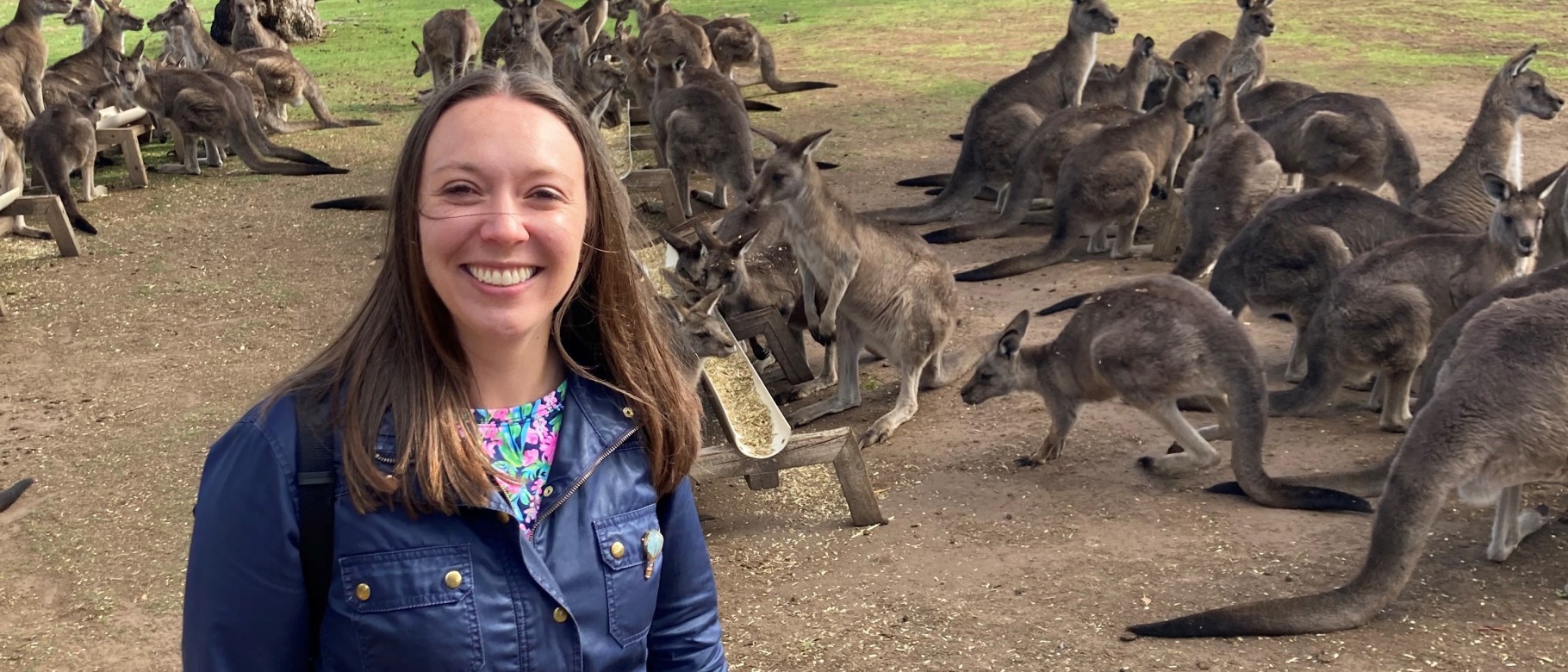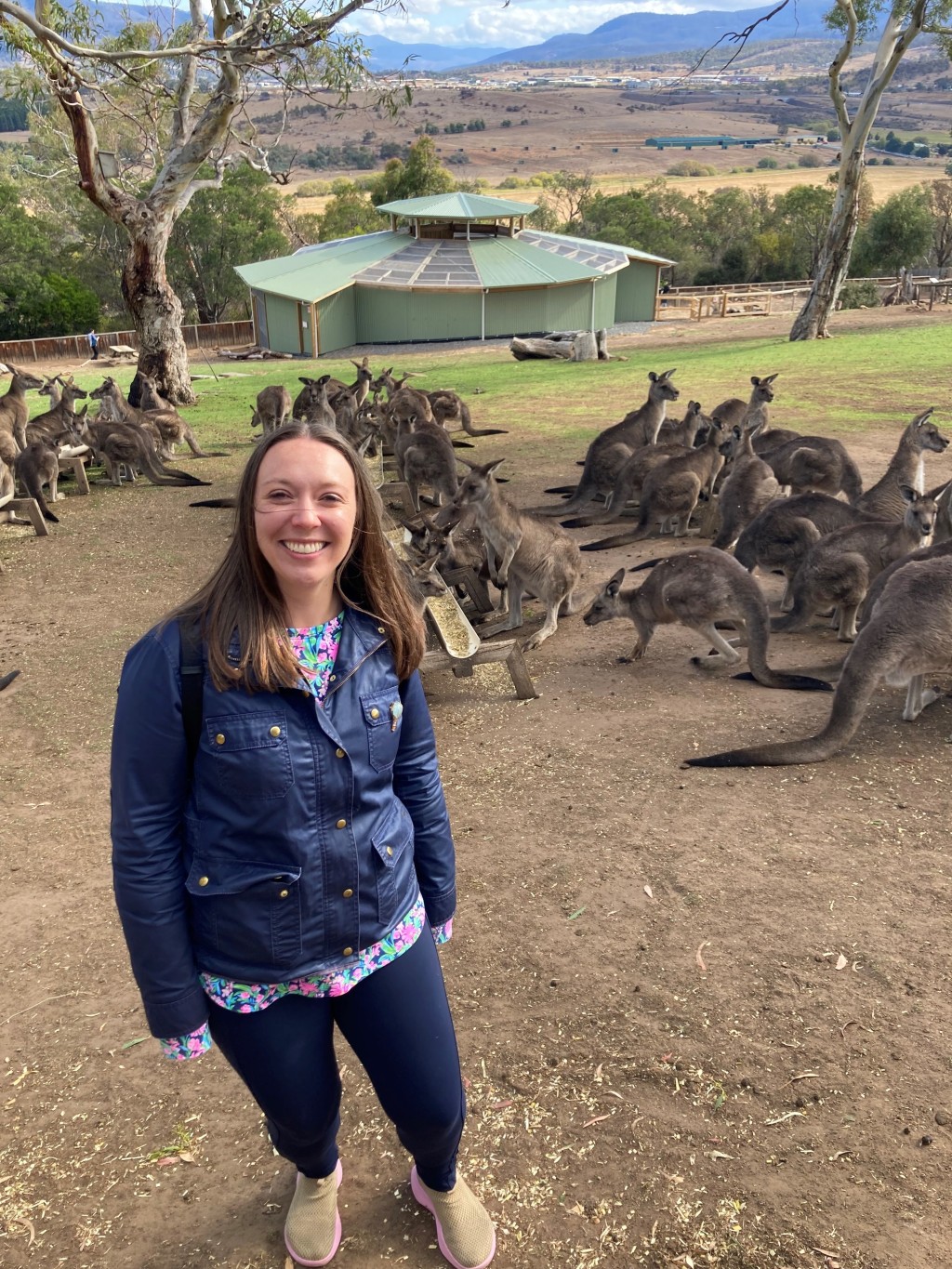Marine Sciences faculty presents research at international symposium in Tasmania

UNE’s Tricia Thibodeau, Ph.D., assistant professor in the School of Marine and Environmental Programs, recently presented new research findings at the 7th International Zooplankton Production Symposium, held from March 17 to 21 in Hobart, Tasmania, Australia.
The zooplankton production symposium is supported by the International Council for the Exploration of the Sea (ICES) and the North Pacific Marine Science Organization (PICES) and aims to provide a forum to discuss zooplankton, passive ocean animal drifts, and their role in the global ecosystem. The symposium discusses the need to understand zooplankton dynamics, their sensitivity to change, and the resultant effects on ecosystems.
Zooplankton play a pivotal role in ocean ecosystems throughout the world because they function as prey for commercially harvested fish, as grazers of primary production, and as drivers of carbon and nutrient cycles. At the symposium, Thibodeau presented her new research characterizing the structure of zooplankton communities in the expanding oxygen minimum zone (OMZ) of the Eastern Tropical North Pacific.
Oxygen minimum zones are places in the ocean where the oxygen concentration is the lowest, either due to biological, chemical, or physical processes. This low oxygen concentration makes it difficult for many marine organisms to live as there is not enough oxygen for them to breathe, Thibodeau said.
In the study, Thibodeau collaborated with colleagues at the University of Rhode Island Graduate School of Oceanography to identify distinct communities of copepods, crustacean zooplankton, and determine whether they prevail across multiple regions within the oxygen minimum zones of the Eastern Tropical North Pacific.
Data were collected by her collaborators across four different research cruises over 10 years, representing an extensive dataset to analyze the dominant environmental conditions structuring copepod communities in OMZ regions, which are expanding globally, as well as identify possible “winners” and “losers” of OMZ expansion.
“By increasing our understanding of the effects of OMZs for zooplankton, we can identify how food webs may be implicated both in terms of zooplankton predators, including some of the most abundant fish globally that are present in the OMZ, as well as better determine implications for carbon export through potential reductions in vertical migration that zooplankton do every day,” Thibodeau said. “The opportunity to attend the International Zooplankton Symposium was an amazing opportunity where I was able to attend presentations from experts in the field, develop international collaborations, as well as establish my research as a new assistant professor at UNE.”
Thibodeau noted that the research also represents the research efforts of three, first-year marine sciences undergraduates, Class of ’27 students Piper Stagg, Olivia Leighton, and Emma Hastings. Thibodeau said the three have been working with her since fall 2023 to help analyze the relative abundance and frequency of the various copepod groups within the dataset using the same technologies working scientists use in the field.
“They first learned how to view and conduct basic descriptive statistics on the dataset in Microsoft Excel and are now working with me to learn how to conduct the same analyses in R, a statistical software program used by many scientists today,” she said.
Funding for the research was made possible through UNE’s College of Arts and Sciences, the School of Marine and Environmental Programs, and an ICES/PICES travel award.

